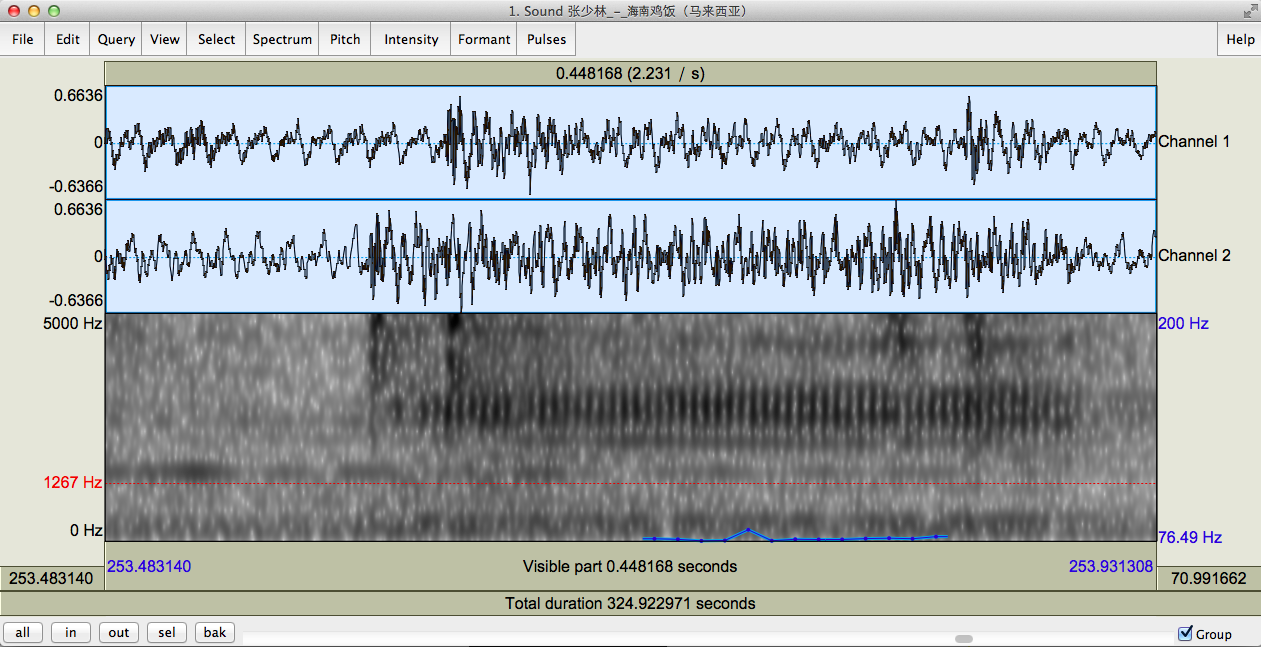I had a second (tenth?) listen, and extracted the sound to an mp3. Then I put this through Praat. I noticed something interesting:
This is the first occurrence of 來, around 72 seconds in:
齐家吃开晓来称赞

This is the second occurrence of 來, around 121 seconds in:
明星或歌星日日来帮衬

The first one is definitely [lɔi], whereas the second one is definitely [lei], and the sonogram confirms it. The second image, with the dense formation in the middle, trailing off into a lighter line is an [ei].
In this case it could be an influence from Cantonese -- Zhang is from Selangor -- where 嚟 is often pronounced lei.
Same around 2mn14 where 来 in 按好吃讲只只来帮衬 is [lei].
So it seems Zhang alternates freely loi and lei.
As for 歌 I had a look with Praat at only the first one (最近做歌星讲好难) -- it's getting late here :-) -- but this one is go1. I confirmed it by listening to it isolately, and looking at its sonogram -- it has the same profile as 近 and 讲). But listening to the full sentence it comes out a little weird, as if it were spirantized.
I'll have a deeper look tomorrow.
ADDENDUM 1
- 两 should be pronounced liong according to my reference, but here it is pronounced lioeng --> Seems like it indeed As you say, probable influence of Canto.
- 张惠妹 sounds like it's pronounced the mandarin way --> Yup.
- 你, in its last occurrence in the last repetition of part three, sounds like it's actually a 系.
That'd be at 4:41 thereabouts.

If you compare this sonogram with the second one, [lei], you see it's kind of similar -- the vowel is basically the same, except it doesn't weaken into [-i]. It's [e:].
Compare this with the 你 at 4:13:

No [e:] here. That's a nice [i:], quite long too. That's quite expected as 你 is ngi2.
As for the initial. In the suspicious 你, look at the initial in the sonogram, and compare it with the sonograms of [loi] and [lei], especially the latter. You have very similar patterns, albeit weaker for 你. I believe Zhang kind of reverted to Cantonese [lei]. The [l-] is there but devoiced (the lower dark line at the beginning of [lei] is barely there). I believe it's a voiceless [l], that can be heard as a [h].
ADDENDUM 2
Regarding Hakka tones, I used Dr Lau's PinFaa data to build a dictionary, which I added into my own little online tool. The tone contours are from [this page]:





